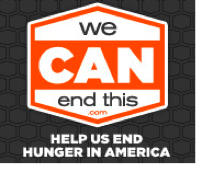If you truly want your company to have a great impact, you can’t go it alone. You need to have partners. But what type and how?

Scott Henderson and his colleagues Anne Bertelsen and Brian Reich seem to be wizards at creating partnerships and drawing out the best from each party. Together, they launched WeCanEndThis.com, a year-long campaign to end hunger in the United States. I invited Scott to Cause Capitalism to ask him what their pitch was and what each party promised to deliver. PepsiCo, Tyson Foods, ConAgra, Feeding America, Share Our Strength, Mashable and South by Southwest (SXSW) are just two-thirds of the organizations who’ve signed up to end hunger in the United States this year.
Here are some of the tactics and Scott and his colleagues use to recruit partners:
Experience
WeCanEndThis.com got a leg up from Scott’s experience and contacts putting together last year’s Pledge to End Hunger campaign. He was able to return to a previous partner and ask for a deeper relationship and leverage his past work as credibility with new partners.
What you can do: Draw on whatever experiences you have had. They can be as small as being a part of a race training team or forming a recycling coalition in your office. Think about what you or others did that worked well.
Order of outreach
Scott and his colleagues recruited their nonprofit partners first. These organizations will have the most emotional connection to the issue. Next they recruited a media sponsor. With the stamp of approval and knowledge that the nonprofits bring and a media outlet lined up to broadcast their message, the team could make a much stronger case to for-profit partners.
What you can do: Try out the above order.
Tell a story
Scott uses stories, examples and digital media to connect people emotionally to the issue. WeCanEndThis will tell the story of hunger in America through the animated journey of a can of food, from shelf to consumer.
What you can do: Think about what most interests you about the problem you’re trying to solve or think of an emblematic item like the can as a perspective from which to tell the story.
The sum is greater than the whole
The team pitched WeCanEndThis as a type of frame. They built the frame that would shape the initiative, but needed the organizational support (money, bodies, mailing lists, press) of their partners. All the partners had to do was plug-in to something that already had a heart beat. It was easy for them to buy into something that was positive (fighting hunger), enduring (a one-year campaign) and brawny (the campaign’s first big push will bring together some of the sharpest minds in media and technology for a CauseLab at SXSW on March 15).
What you can do: Nail down some elements. Approach your partners with a frame and a mission. Tell the story of the impact they can make by joining an initiative that’s already gearing up.
Buy-in
It’s got to be two-ways. If you have the framework and the vision, your partners will need to contribute in-kind and/or cash donations. Scott believed in the value he was creating for his partners.
What you can do: You’re reaching out to other organizations because they have some type of muscle that you don’t. Know ahead of time how they can advance your mission and have a sense of how (much) they can contribute. Don’t forget the emotional component–continue to paint the picture of how they can be a part of the solution.
Accountability
When I partnered with eBay’s GivingWorks.com for iGiveTwice.com, I over promised what I could deliver. I asked Scott how his team kept to doable deliverables (sounds simple, I know, but imagine sitting with Pepsi as a potential sponsor, you might feel more optimistic about what you can deliver than is realistic). He kept the deliverables tangible (the attention of 1000s of people at SXSW) but also avoided what they couldn’t guarantee. When you’re bushwhacking a new path, there’s not a lot of previous data to draw on.
What you can do: Really be aware of what you can offer. It’s better to promise low and over-deliver. Admit when you don’t know what a reasonable expectation is. Crunch the numbers when possible.
Be fertilizer to a flower bed
Back to where we started. Scott and his team knew they couldn’t end hunger on their own but they could harness minds and money that could. Even more than WeCanEndThis’ partners, it relies on us to generate a solution. It’s an open-sourced campaign using real world events (CauseLab, food deliveries and days of service) and online voting (donate a digital can to the state of your choice and the top 10 states will each receive 150,000 meals) to collectively mine ways to eradicate hunger.
What you can do: Realize that many more answers and solutions lay ‘out there’ than ‘in here’ and appreciate your role as fertilizer.
WeCanEndThis is dynamic and spirited and offers a course of action for everyone. Decide what role you want in ending hunger.
This is the first initiative in a line of social campaigns that CauseShift will launch to bring together different types of thought leaders with nonprofits, corporations and individuals to solve problems.
Like what Scott’s doing? You should tell him on Twitter at @scottyhendo or @WeCanEndThis.





 I'm Olivia Khalili. I created Cause Capitalism to show you how to grow your business by incorporating a social mission.
I'm Olivia Khalili. I created Cause Capitalism to show you how to grow your business by incorporating a social mission. 
